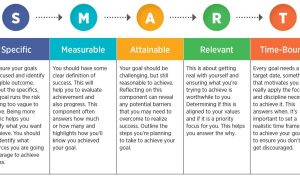The Ever-Evolving Landscape of Electronics
In today’s fast-paced digital era, electronics transactions are no longer a luxury but an integral part of our daily lives. From the smartphones we use to connect with loved ones and the laptops we rely on for work and study, to the smartwatches that track our health and the home assistants that simplify our routines, gadgets have become essential. The global market for electronics is a dynamic, multi-billion dollar industry, constantly evolving with new innovations and trends. Whether you’re a seasoned tech enthusiast or a casual user looking to upgrade, navigating this vast landscape of gadgets can be both exciting and overwhelming.
This comprehensive guide is designed to help you, whether you’re looking to buy your next device or sell your pre-loved gadgets. We’ll cover everything from making smart purchasing decisions to maximizing your profit when selling, all while ensuring a safe and secure transaction.
Part 1: The Art of Buying Electronics & Gadgets
Before you hit the “buy now” button, it’s crucial to do your homework. The sheer number of options can be dizzying, but a little research can save you from buyer’s remorse and ensure you get the best value for your money.
1. Define Your Needs and Budget
The first step is to be clear about what you need the device for. Are you a gamer needing a high-performance graphics card? A photographer requiring a laptop with a powerful processor for photo editing? Or a student looking for a reliable, lightweight tablet for taking notes? Answering these questions will narrow down your options significantly.
Next, set a realistic budget. The price range for a single type of device, like a smartphone, can vary wildly. Decide on a maximum amount you’re willing to spend. Remember, the most expensive product isn’t always the best fit for your specific needs. Sometimes, a mid-range model offers the perfect balance of features and affordability.
2. Research, Research, Research!
Once you have a clear idea of your needs and budget, it’s time to dive into research. Here’s what to look for:
- Read Expert Reviews: Tech websites and publications like CNET, The Verge, and TechRadar provide in-depth, unbiased reviews. They often compare different models and highlight pros and cons, which can be invaluable.
- Watch Video Reviews: YouTube is a treasure trove of information. Unboxings, hands-on tests, and long-term reviews from tech influencers and channels offer a different perspective and can help you visualize the product in action.
- Check User Feedback: Look at customer reviews on e-commerce sites like Amazon, Best Buy, or the manufacturer’s own website. This gives you insight into real-world performance, common issues, and user satisfaction.
- Compare Specifications: Don’t get lost in jargon. Focus on key specs that are relevant to your needs. For a laptop, this might be processor speed, RAM, and storage. For a camera, it could be megapixels and lens type.
3. Choosing a Reputable Seller
Where you buy your electronics is just as important as what you buy. Stick to authorized dealers and well-known retailers, both online and in brick-and-mortar stores. This guarantees that you are getting a genuine product, complete with a manufacturer’s warranty. While third-party sellers on marketplaces can sometimes offer lower prices, they come with risks, such as receiving counterfeit or refurbished items disguised as new. Always check the seller’s rating and return policy.
Part 2: The Smart Way to Sell Your Electronics & Gadgets
With new devices constantly hitting the market, selling your old gadgets is a great way to earn extra cash and reduce electronic waste. Here’s how to do it effectively and securely.
1. Prepare Your Device for Sale
Before you list your item, a little preparation goes a long way in attracting buyers and ensuring a smooth transaction.
- Clean and Inspect: Give your device a thorough cleaning. Remove any fingerprints, dust, or smudges. Take note of any cosmetic damage like scratches or dents. Be honest about these in your listing.
- Gather All Accessories: Find the original box, charger, cables, and any other accessories that came with the device. Having these can significantly increase the resale value.
- Factory Reset: This is the most crucial step. A factory reset wipes all your personal data, accounts, and settings from the device. This protects your privacy and ensures the buyer receives a clean slate. For smartphones and computers, always back up your data before performing a reset.
2. Determine the Right Price
Pricing your item correctly is key to a quick sale.
- Research the Market: Look at what similar used gadgets are selling for on platforms like eBay, Swappa, or Facebook Marketplace. Filter by items that have already been sold to get a realistic idea of the market price.
- Consider Condition: A device in “mint condition” (like new) will command a higher price than one with visible wear and tear. Be transparent about the condition and price accordingly.
- Factor in Demand: Some devices hold their value better than others. High-demand items from popular brands like Apple or Samsung generally sell faster and at a higher price.
3. Create a Compelling Listing
Your listing is your sales pitch. Make it count.
- High-Quality Photos: Take several clear, well-lit photos from different angles. Include a photo of any damage you mentioned. Good photos build trust and make your listing stand out.
- Detailed and Honest Description: Write a comprehensive description. Include the model number, specifications, condition, and what’s included (charger, box, etc.). Be completely honest about the device’s history and any issues. Mention why you are selling it (e.g., “upgraded to a newer model”).
- Highlight Key Features: Mention features that make your device desirable, such as battery health for a smartphone or the total hours of use for a gaming console.
Part 3: The Transaction: Safety First
Whether you’re buying or selling, safety should be your top priority.
- Use Secure Platforms: Stick to well-known marketplaces with built-in buyer and seller protections. These platforms often handle payment processing and have a dispute resolution process.
- Avoid Unsecured Payments: Never accept or make payments via unsecured methods like direct bank transfers or money orders from unknown parties. Use methods like PayPal or the platform’s own payment system.
- Meet in Public: If you’re arranging a local pickup, always meet in a well-lit, public place, such as a coffee shop or a police station lobby. Do not go to a buyer’s or seller’s home.
Conclusion: A Smarter Way to Tech
Navigating the world of electronics transactions can be simple and rewarding. By doing your research, being honest and transparent, and prioritizing safety, you can confidently buy the perfect gadget for your needs or successfully sell your old devices for a profit. The digital world is full of amazing possibilities, and with these tips, you’re ready to unlock them safely and smartly. Happy buying and selling!







